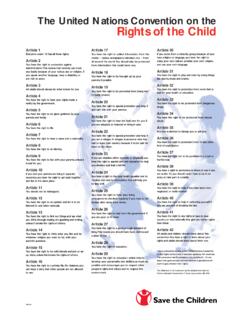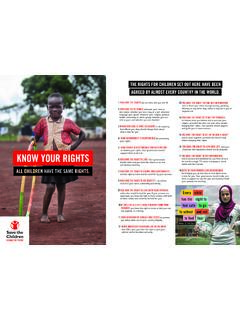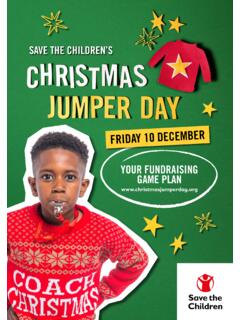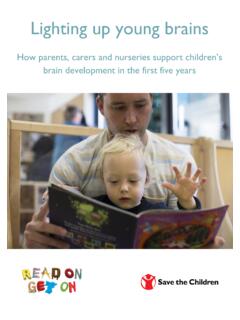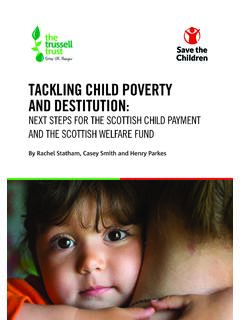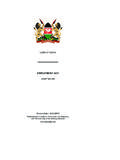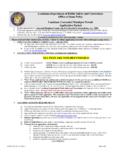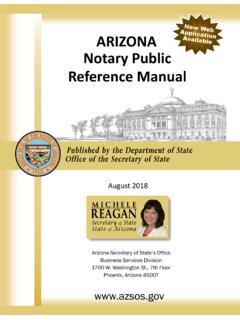Transcription of The War On Children - Save the Children
1 THE WARON CHILDRENASLDAS DLTime to end grave violations against Children in conflict. Foreword .. 3 PART 1 Definitions Used in this Report .. Executive Summary .. Introduction .. Methodology .. 12 PART 2: MAPPING 20 YEARS OF GRAVE VIOLATIONS AGAINST Children IN CONFLICT .. Conflict Trends .. Trends in Grave Violations .. 18 1. Killing and maiming .. 20 2. Children associated with armed forces and groups .. 22 3. Sexual violence .. 24 4. Abduction .. 26 5.
2 Attacks on schools and hospitals .. 28 6. Denial of humanitarian access .. 30 PART 3: WHY ARE Children INCREASINGLY HARMED BY CONFLICT? .. Recommendations: What can be done to protect Children from the horrors of war? .. 38 ACKNOWLEDGEMENTS:This report was written by Mariam Kirollos, Caroline Anning, Gunvor Knag Fylkesnes and James Denselow from Save the Children , with Mariam additionally providing in-depth analysis of 20 years of UN Children and armed conflict would like to thank the research team from the Peace Research Institute in Oslo (PRIO) for their background report Children and armed conflict : What Existing Data Can Tell Us.
3 The research team members, led by Gudrun stby, are Karim Bahgat, Kendra Dupuy, Siri Aas Rustad, H vard Strand and Tore Wig. We are grateful to colleagues from across Save the Children for comments and inputs that have helped improve and enrich the report, as well as colleagues who produced case studies for this : Nyhetsgrafikk Design: Amund Lie Nitter Save the Children International 2018 This publication is copyright, but may be reproduced by any method without fee or prior permission for teaching purposes, but not for resale.
4 For copying in any other circumstances, prior written permission must be obtained from the publisher, and a fee may be SAVE THE Children All wars, whether just or unjust, disastrous or victorious, are waged against the child. EGLANTYNE JEBBThe founder of Save the Children uttered these unforgettable words almost one hundred years ago and they remain true to this day. She was standing up for Children who were starving in Germany and Austria because of a blockade imposed by the Allies in the aftermath of the First World War.
5 The courage of Eglantyne, to challenge powerful governments including her own in the United Kingdom, started a global movement for protecting Children in conflict. Now, more than at any time in the last two decades, we need to find that same strength to stop the suffering of Children affected by war. Our report reveals that one in six Children live in conflict zones and those 357 million live at risk of grave violations. The number of Children verified by the UN as killed or maimed has risen drastically in the last 10 years.
6 Reports of life-saving aid such as food, water and medicine being blocked are up more than 1,500 percent since 2010. Attacks on what should, by any law or civilized standard, be safe places for Children such as schools and hospitals are also becoming a new normal in conflicts , with reported incidents having roughly doubled in the last decade. Save the Children is particularly concerned about the fates of those Children living in what are ranked as the most dangerous con-flict-affected countries: Syria, Afghanistan and Somalia top this list, with the Middle East and Africa being the worst regions for Children threatened by violent conflict can occur in any region, and we see new and disturbing situations emerging every year.
7 The recent horrors inflicted on Rohingya Children in Myanmar, almost 400,000 of whom have fled to Bangla-desh for the relative safety of refugee camps, is a case in point. I have met some of these Children and Save the Children has told their stories to the world while we work to help them recover. These Children have seen and experienced things no child ever should: their homes burnt, their families killed and their innocence stolen. It is time to end the War on Children for good. Everyone with the power to make a difference must ask and answer the same question Eglantyne Jebb did, almost a century ago: what can we do to save Children from the scourge of war?
8 This report proposes four areas for concerted action: investment in preventing Children from being put at risk; upholding of international laws and stand-ards; intensified action to hold violators to account; and an increased effort to rebuild the lives of Children shattered by conflict. For each area, we are proposing practical recommendations that states and non-state actors can act on to ensure that Children are protected. We face a stark choice. Will we stand by while more Children die at their school desks and in their hospital beds, are denied the life-saving assistance they need to survive or are recruited into armed groups?
9 Or will we fulfil the promise to the next generation, set forth in the UN Sustaina-ble Development Goals, and build a better world where all Children can live, learn and thrive in peace?Helle Thorning-Schmidt CEO of Save the Children InternationalFOREWORDWAR ON Children 3 This report uses the Uppsala Conflict Data Program (UCDP)1 definitions of conflict. The UCDP is the world s foremost provider of data on organized violence, and its Georeferenced Event Dataset and other datasets inform this research. Conflict/ armed conflict : when armed force is used by an organized actor against another organized actor, or against civilians, resulting in at least 25 battle-related deaths in one calendar year.
10 The definition includes three types of conflict: State-based conflict takes place between two states (inter-state conflict), or between one state and one or more rebel groups (civil conflict). Non-state conflict is fought between two organ-ized, armed actors, of which neither is the govern-ment of a state. One-sided violence is perpetrated by an organ-ized armed group, either a state s military forces or an armed group, against civilians. Conflict incidents/ events: conflicts usually consist of several conflict events a conflict event is defined as a lethal incident, either a violent clash between two armed groups or an attack on civilians by a group/groups, at a given time and zone/ area impacted by conflict: areas within 50km from where one or more conflict incidents takes place in a given year, within the borders of a deaths: the use of armed force be-tween warring parties in a conflict, be it state-based or non-state, resulting in deaths.

